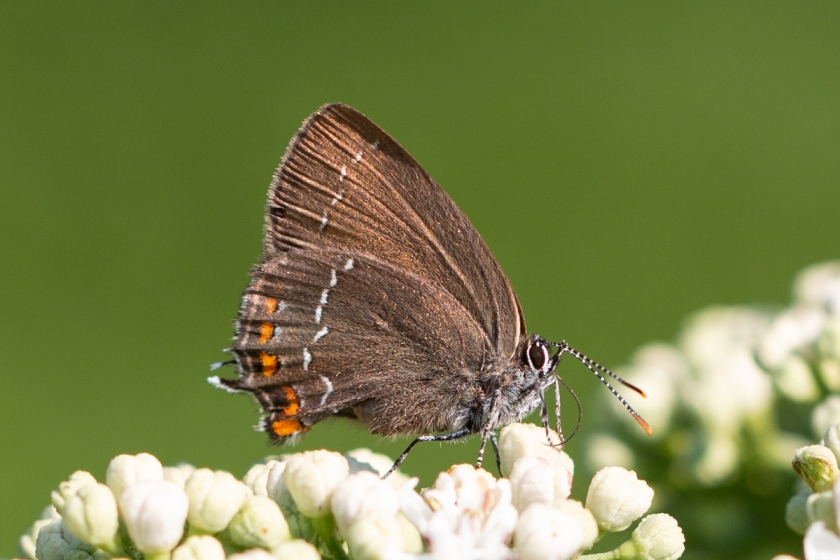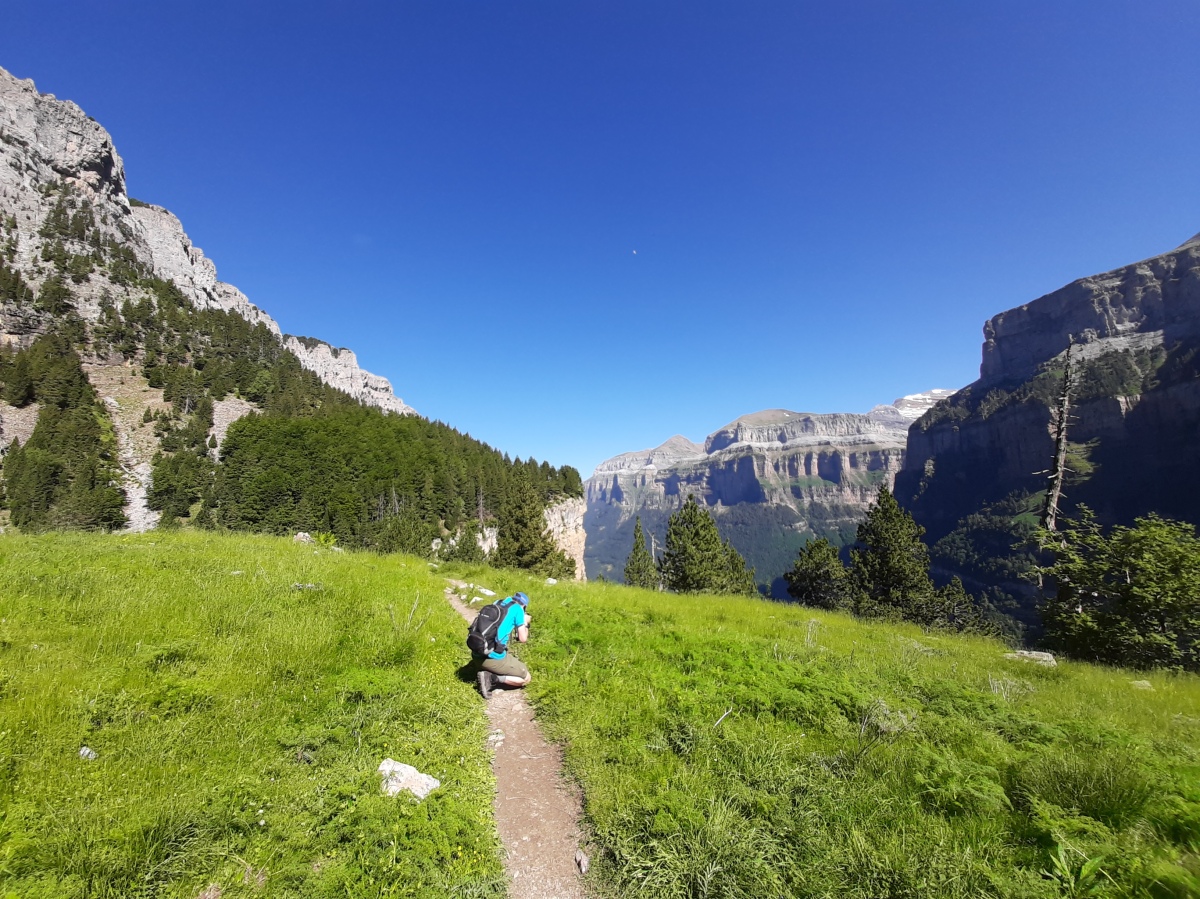Our rented house in Sarvisé proved to be not only well situated for walks, but also a butterfly hotspot. One particular day was very rewarding.
We were walking in the Cañón de Añisclo when we arrived at a bend in the river where my wife found a spot in the shade to doze off, while I chased butterflies such as the Provencal Fritillary (Melitaea deione):

When we were about to return, I spotted this Southern white admiral (Limenitis reducta) flapping its wings oddly right next to the path. When I approached, it did not fly away and seemed to be stuck to a twig. To be honest, I took a shot of its underside first with fill-flash before I gently took the butterfly in my hands and freed it from the spider web threads that it was entangled in. As a return favor, the butterfly posed on my hand for a while.


After this long hike, my wife suggested to grab a beer in an open-air bar just 100 meters down the road from our house. However, we had not walked more than 10 meters when something small and brown caught my eye. Upon closer inspection, the bushes next to the road were literally full of hairstreaks. I had completely missed this on previous days as I had been searching for butterflies in the opposite direction. What a nice surprise! After first drinking beers and chatting about our fine day, I received the green light to go after the hairstreaks. First up was the Ilex hairstreak (Satyrium ilicis) which also occurs in The Netherlands:

The most interesting one was the Spanish purple hairstreak (Laeosopis roboris), another lifer. It is fairly large at about double the size of the Ilex hairstreak and although not particularly rare it is not easily seen. Therefore I am very pleased with this specimen and photo:

The Spanish Pyrenees were indeed the butterfly biodiversity hotspot that I expected: I recorded just short of 70 species in eight days of hiking. This number is even more impressive if compared to a week of fulltime butterflying in Greece that yielded “just” over 80 species.
While I write this, high summer has arrived in The Netherlands with sunshine, blue skies and 30 degrees. I’ve been butterflying all morning and afternoon and recorded my 30th species in The Netherlands in’23 and took some very nice photos. More on that in the next blog.






